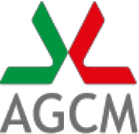PRICES OF DAILY NEWSPAPERS
PRESS RELEASE
Prof. Giuliano Amato, Chairman of the Italian Competition Authority, has submitted an advisory opinion to the Broadcasting and Publishing Authority with regards to the alleged price fixing arrangements amongst daily newspapers publishers, asking it to take appropriate enforcement action.
The advisory opinion, issued in compliance with Article 20 of Law no. 287/90, highlights that these arrangements can reduce competition and cause harm to consumers and expresses the opinion that the introduction of price competition in the daily press sector can bring about an increase in efficiency.
The price of daily newspapers has been liberalised starting from January 1st 1988, but the greater decisional autonomy enjoyed by the publishing companies has not lead to significant pricing differences. As Table 1 shows, from 1988 to today, the price of daily newspapers have followed a parallel trend.
TABLE 1 - PRICE TREND OF SOME DAILY NEWSPAPERS FROM 1988
| From 1/1/88 to 28/2/88 | From 1/3/88 to 31/7/88 | From 1/8/88 to 31/7/90 | From 1/8/90 to 27/6/93 | From 28/6/93 to 31/12/94 | From 2/1/95 to 9/4/95 | From 10/4/95 on | |
| Corriere della Sera | 800 | 900 | 1,000 | 1,200 | 1,300 | 1,400 | 1,500 |
| La Repubblica | 800 | 900 | 1,000 | 1,200 | 1,300 (1) | 1,400 | 1,500 |
| La Stampa | 800 | 900 | 1,000 | 1,200 | 1,300 | 1,400 | 1,500 |
| Il Messaggero | 800 | 900 | 1,000 | 1,200 | 1,300 | 1,400 | 1,500 |
| Il Giornale | 800 | 900 | 1,000 | 1,200 | 1,300 (2) | 1,400 | 1,500 |
| L'Unità | 800 | 900 | 1,000 | 1,200 | 1,300/1,500 (3) | 1,500 | 1,500 |
| Il Mattino | 800 | 900 | 1,000 | 1,200 | 1,300 | 1,400 | 1,500 |
| Il Manifesto | 800 | 900 | 1,000 | 1,200/1,500 (4) | 1,500 | 1,500 | 1,500/1,800 (5) |
| Il Sole 24 Ore | 800 | 900 | 1,000/1,100 (6) | 1,300 | 1,400/1,500 (7) | 1,500 | 1,600 (8) |
| Corriere dello Sport | 800 | 900 | 1,000 | 1,200 | 1,300 | 1,400 | 1,400 |
SOURCE: DATA SUPPLIED BY DAILY NEWSPAPERS PUBLISHERS
(1) PRICE RAISED BEGINNING FROM 29/6/93. (2) PRICE RAISED BEGINNING FROM 1/7/93. (3) PRICE AT 1,300 LIRE FROM 29/6/93 TO 17/10/94 AND PRICE AT 1,500 LIRE FROM 18/10/94. (4) PRICE AT 1,500 LIRE FROM 4/5/1993. (5) PRICE AT 1,800 LIRE FROM 23/5/95. (6) PRICE AT 1,100 LIRE FROM 1/11/89 TO 31/7/90. (7) PRICE AT 1,400 LIRE UNTIL 31/10/94 AND PRICE AT 1,500 LIRE FROM 1/11/94. (8) PRICE RAISED FROM 12/4/95.
In its advisory opinion, the President of the Authority points out that parallel trends of resale prices can correspond, sometimes, to price policies that are adopted and carried out autonomously by firms operating with similar cost structures and market conditions. Indeed, it is possible that these firms reacted with similar price variations to changes in market conditions, as, for instance, in those relating to factory costs. Following this approach, thus it could be noted that the price increases detailed in Table 1 derive from similar cost variations incurred by publishers like, for example, paper price increases.
However, this supposition is not very convincing if one considers the dissimilar characteristics of the publishing companies whose newspapers have very different circulation figures. In this regard, it seems reasonable to believe that there are different cost functions and that, therefore, factory costs increases affect in different way the equilibrium of firm and, as a result, the decisions to change sale prices.
The parallel nature of the newspapers' price increase, nonetheless, is likely to exclude that these variations derive from autonomous price decisions taken by single publishers. On the contrary, the uniform price trend may lead to suppose that newspapers publishers have concluded among themselves agreements or concerted practices, aimed at reducing price competition, in violation of Section 2 of Law no. 287/90.
Finally, according to the advisory opinion, the structure of the daily press sector and the nature of its past regulation might lead to forms of non-price competition, as, for instance, those practiced in the last years by many publishers consisting in free gifts or cheaply priced goods, like magazines or videos, sold with the copy. In addition, it is to be noted that the adoption of these forms of non-price competition can be compatible with price competition; and that it is not necessarily true that a greater utilization of price competition strategies will lead to drive rivals from the market, with subsequent negative effects on the information pluralism.

